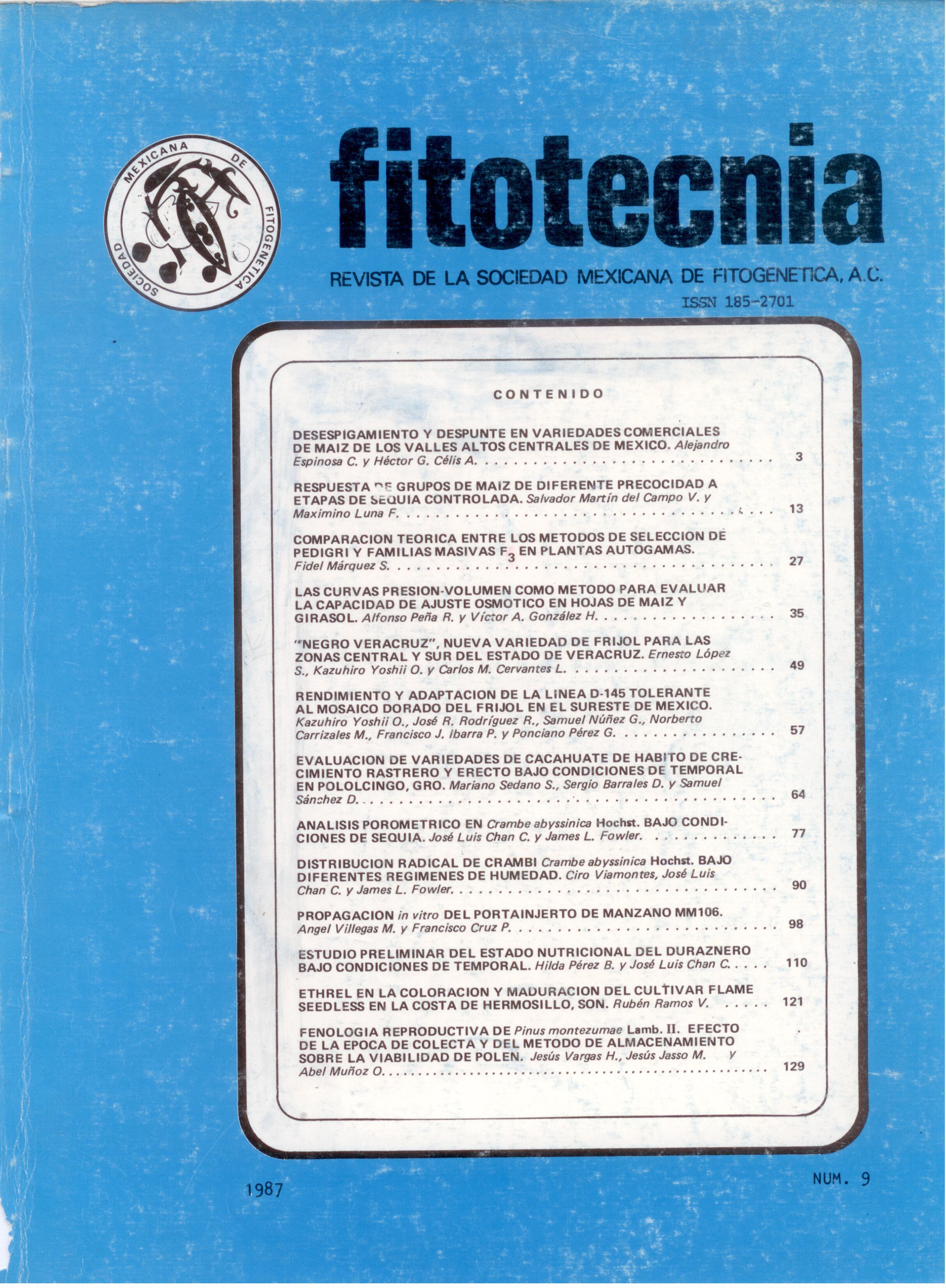DE-TOPPING AND TOPPING IN COMMERCIAL CORN VARIETIES FROM THE CENTRAL HIGH VALLEYS OF MEXICO
Main Article Content
Abstract
Detasseling and heading corn (Zea ma L.) are two common practices in the Central High Valleys of Mexico, because the farmer uses the forage as an auxiliary in animal feeding. There are studies where it is stated that detasseling increases grain production. With the genotypes Huamantla (V-23), H-30, VS-22, H-131 and H-137E, an experiment was established to analyze the effect of such practices; The experiment was carried out under irrigation conditions in the Valle de México Experimental Agricultural Field. In each cultivar, two detasseling treatments were applied (before and after anthesis) and one detasseling treatment (when the grain was in the milky-doughy stage), which were compared with a control without detasseling and without stemming. In H-137E, grain increases were obtained with preanthesis detasseling of up to 31%, but the response of the genotypes interacted with the practices. The forage yield by pruning reached values of up to 10.3 tons/ha, detecting significant differences between varieties.
Article Details

This work is licensed under a Creative Commons Attribution-NonCommercial-ShareAlike 4.0 International License.

